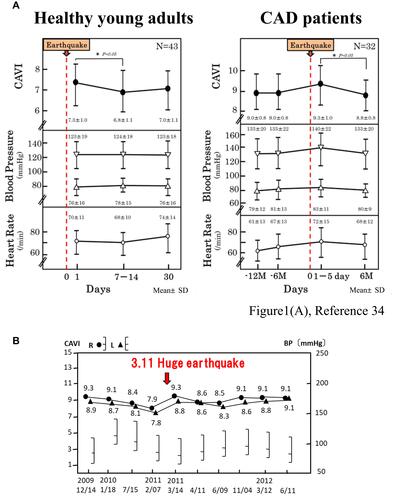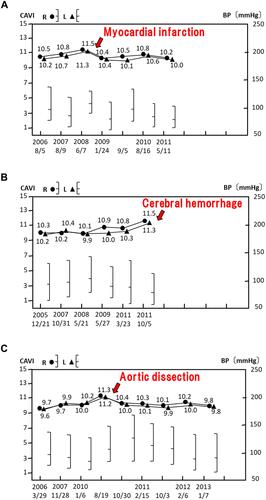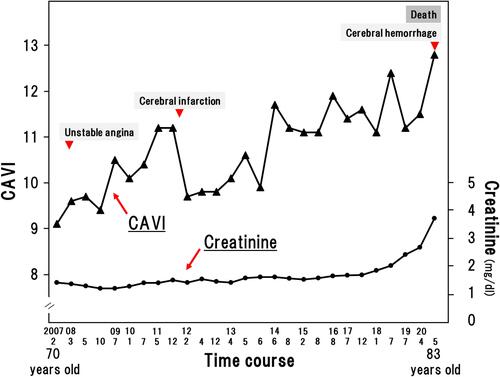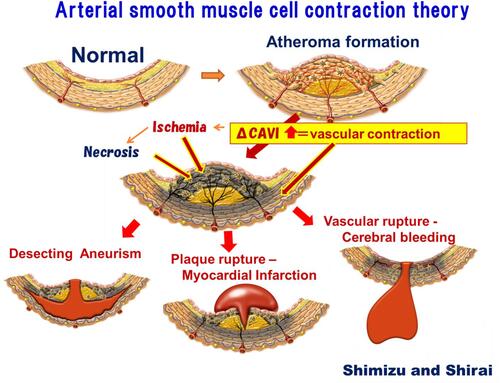Figures & data
Figure 1 Increase in cardio-ankle vascular index (CAVI) just after the Great East Japan Earthquake (M9; March 11, 2011). The immediate increase was seen in both healthy young adults and in coronary artery disease (CAD) patients, despite their relatively stable blood pressure (A). Some patients showed a marked increase in CAVI following the earthquake, such as in the CAVI results of the diabetic hypertense patient shown here (B) who suffered psychological stress.

Figure 2 Increase in the cardio-ankle vascular index (CAVI) prior to cerebro-cardiovascular events. Cases with a rapid rise in CAVI who had acute myocardial infarction 4 months later (A), cerebral hemorrhage 7 days later (B), and aortic dissection 2 weeks later (C).

Figure 3 Increase in cardio-ankle vascular index (CAVI) over 13 years in an atherosclerosis patient with a high baseline CAVI. This patient showed a rapid rise in CAVI (to 11.5) a few months before cerebral infarction and a high rapid rise to 12.8 just prior to cerebral hemorrhage.

Figure 4 Carotid endarterectomy of a patient with 90% stenosis of the cervical artery. (A) Atherosclerosis of the carotid artery and endarterectomy; (B) Gauze was applied for the bleeding which occurred after peeling off the intimal atheromatous layer of the carotid artery; (C) Gauze, dipped in the catecholamine noradrenaline, was applied and inhibited the bleeding, indicating that the blood supply of the intimal atheromatous lesion was from the vasa vasorum and that it was stopped by contraction of the medial smooth muscle cells.


